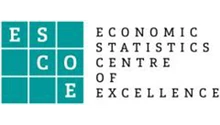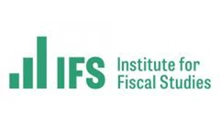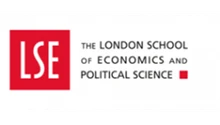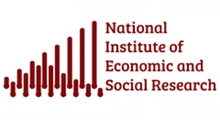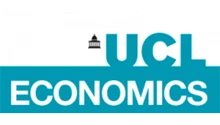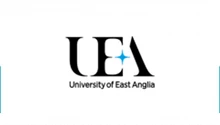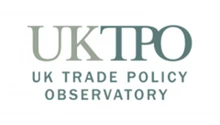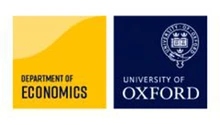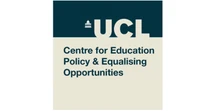The 16-year-olds who took their GCSEs this summer started secondary school in the middle of the pandemic. The results of these high-stakes exams will highlight the uneven toll that Covid-19 lockdowns took on learning, as well as the key role that good grades play in shaping future opportunities.
As GCSE results day looms, a unique set of pupils stands at a crossroads. When the pandemic struck in March 2020, these young people were in Year 6, preparing to leave primary school. Their transition to secondary education was overshadowed by lockdowns, extended school closures, isolation from friends and uneven access to remote learning.
Five years later, they are facing one of the most high-stakes moments in England’s education system: the release of their GCSE results. For many, these grades will open doors to further study and work. For others, particularly those just missing key thresholds, the consequences may be less favourable. The results will shape not only their next steps, but also their educational and economic prospects well into adulthood.
GCSE thresholds can shape life chances
In England, full-time education is compulsory until the age of 16. GCSEs mark the end of this stage, serving as a gateway to further/higher education, training or employment – with some participation in education required until age 18. These days, the exams are graded on a 9-1 scale, replacing the old A*-G scale (Ofqual, 2025), with a pass defined as grade 4 (equivalent to the old grade C) or above, especially in English and maths (Machin et al, 2018).
This grade is often a pre-requisite for certain courses, and it can influence the type of institution that the young person goes on to attend. It also matters to schools, as results feed into the published school performance tables. Pupils who fail to reach a grade 4 in English or maths must re-sit these subjects if they wish to continue in publicly funded education (Maris and Robinson, 2025).
For pupils on the cusp – say, earning a grade 3 (the old grade D) instead of a 4 – the difference can be profound. Missing the grade in English by a thin margin is associated with a sharp drop in future educational participation: 11% of pupils just below the threshold leave education entirely by the age of 18.
Achieving the grade by a thin margin leads to the probability of becoming ‘NEET’ (not in education, employment or training) being reduced by around 3 percentage points. It also increases the probability of starting a high-level qualification within three years by 6-9 percentage points, and boosts the probability of entering tertiary education by 2.5-4 percentage points (Machin et al, 2018).
These thresholds are not just academic hurdles: they are tied to broader life outcomes. Many people do not progress from lower-level courses to higher-level ones (Hupkau et al, 2017), even though gaining a Level 3 qualification (equivalent to A-levels) can increase hourly wages by around 11% compared with stopping at Level 2 (equivalent to GCSE grade 4 and above) (Machin et al, 2018).
In a well-functioning system, narrowly missing a grade C should not set in motion such a cascade of disadvantage. Yet for the ‘marginal’ pupil, the penalties are severe – and for the pandemic generation, the odds have been further stacked against them.
The pandemic has left lasting scars on attendance and attainment
School closures and local restrictions during the pandemic led to spikes in absence rates, especially in disadvantaged areas. Local restrictions had an impact on pupils’ absence even when they were not directed towards schools. Pupils in areas with higher tier restrictions (Tiers 2,3 and 4) missed more school than those in Tier 1 regions. For example, pupils in a Tier 4 region were 5% more likely to be absent from secondary schools compared with their counterparts in a Tier 1 region (Gibbons et al, 2025).
This disproportionately affected those coming from deprived neighbourhoods. Spending eight days in Tier 2 or 3 resulted in a half day of absence over the term for a pupil in the least deprived area. But it led to 2.25 days of absence for a pupil in the most deprived area (Gibbons et al, 2025).
Absence patterns also changed in ways that persisted beyond the immediate crisis. A 10% increase in absence in 2020 translated into a 6.5% increase the following year, with effects projected to last for years (Gibbons et al, 2025). This was especially pronounced among secondary school pupils and those from low-income households. Much of the long-term rise came from ‘unforced’ absences – those not mandated by isolation rules but driven by shifts in family attitudes to attendance during that period.
The toll that the pandemic has had on learning is well documented. Across countries, children aged 5-18 lost the equivalent of 35% of a normal year’s education on average (Betthäuser et al, 2023). In England, pupils lost 61 days of schooling on average between March 2020 and April 2021, with pupils from disadvantaged backgrounds more adversely affected (Elliot Major et al, 2021).
During the first round of school closures, the poorest pupils missed out on roughly 60% of their learning, while the richest pupils missed out on 47.5% of their learning. Since 2020, the relative attainment gap – based on average grades in English and maths GCSEs – between pupils on free school meals and those who are not has widened. The disadvantage gap index rose to 3.94 – up from 3.74 in 2014 – its highest level in over a decade (Department for Education, 2023).
Socio-emotional skills also declined. In research for the Nuffield Foundation, Lee Elliot Major and colleagues find that attributes such as resilience, cooperation and attention are as important as cognitive skills in predicting GCSE success and later earnings. Yet recovery efforts in England have focused far more on academic catch-up than on wellbeing or enrichment (Elliot Major et al, 2024).
Research shows that the socio-emotional gap between more and less affluent teenagers widened significantly during the pandemic. The result is a double blow for successive cohorts of the Covid-19 era, as they face the steepest fall in basic GCSE achievement in at least two decades and a significant widening of socio-economic gaps.
For the class of 2025, who began secondary school in the shadow of lockdowns, these factors imply a higher risk of falling on the wrong side of the critical GCSE thresholds. Lower attainment in earlier years, disrupted habits of attendance and reduced socio-emotional support may make it more likely that pupils – particularly those from low-income backgrounds – just miss a key threshold (grade 4) in English or maths, putting them at risk of missing out on future opportunities. This could set a trajectory that will affect their whole lives.
Investing in a fairer system
Improving outcomes for children and young people requires investment in human capital. One study shows that on average, an increase of £1,000 per pupil per year in primary schools (in 2009 prices, around £1,500 today) led to roughly four months of extra progress for a pupil (Gibbons et al, 2018). Such investment could help to restore attainment to pre-pandemic levels, and children from lower-income backgrounds would be likely to benefit the most (Gibbons and McNally, 2013).
Yet funding remains tight. Since 2019, primary and secondary spending per pupil has risen by around 1% per year in real terms, but about half this growth is due to the increase in high needs funding. Despite the increase, the Institute for Fiscal Studies (IFS) points out that costs have also grown, concluding that while there was a real-terms growth in spending per pupil in 2024/25, ‘growth in funding per pupil didn’t seem to quite cover school costs. A similar picture is emerging for 2025/26 (Drayton et al, 2025).
Alongside greater investment, low-cost policies could also help. Such measures could include having trained undergraduate tutors to deliver academic and mentoring support; an enrichment guarantee to ensure that all pupils have access to activities that strengthen their socio-economic skills; and the creation of a national programme to measure pupils’ wellbeing (Elliot Major et al, 2024).
Falls in GCSE attainment related to Covid-19 are projected to cost the UK economy over £31 billion in today’s prices through reduced lifetime earnings (Elliot Major et al, 2024). Targeted interventions would cost a fraction of that – and the moral case is even stronger.
We cannot allow generation after generation to be defined by a single missed grade. A fairer and more supportive system would ensure that temporary disruption does not become permanent disadvantage – and that the doors of opportunity remain open for all young people.









